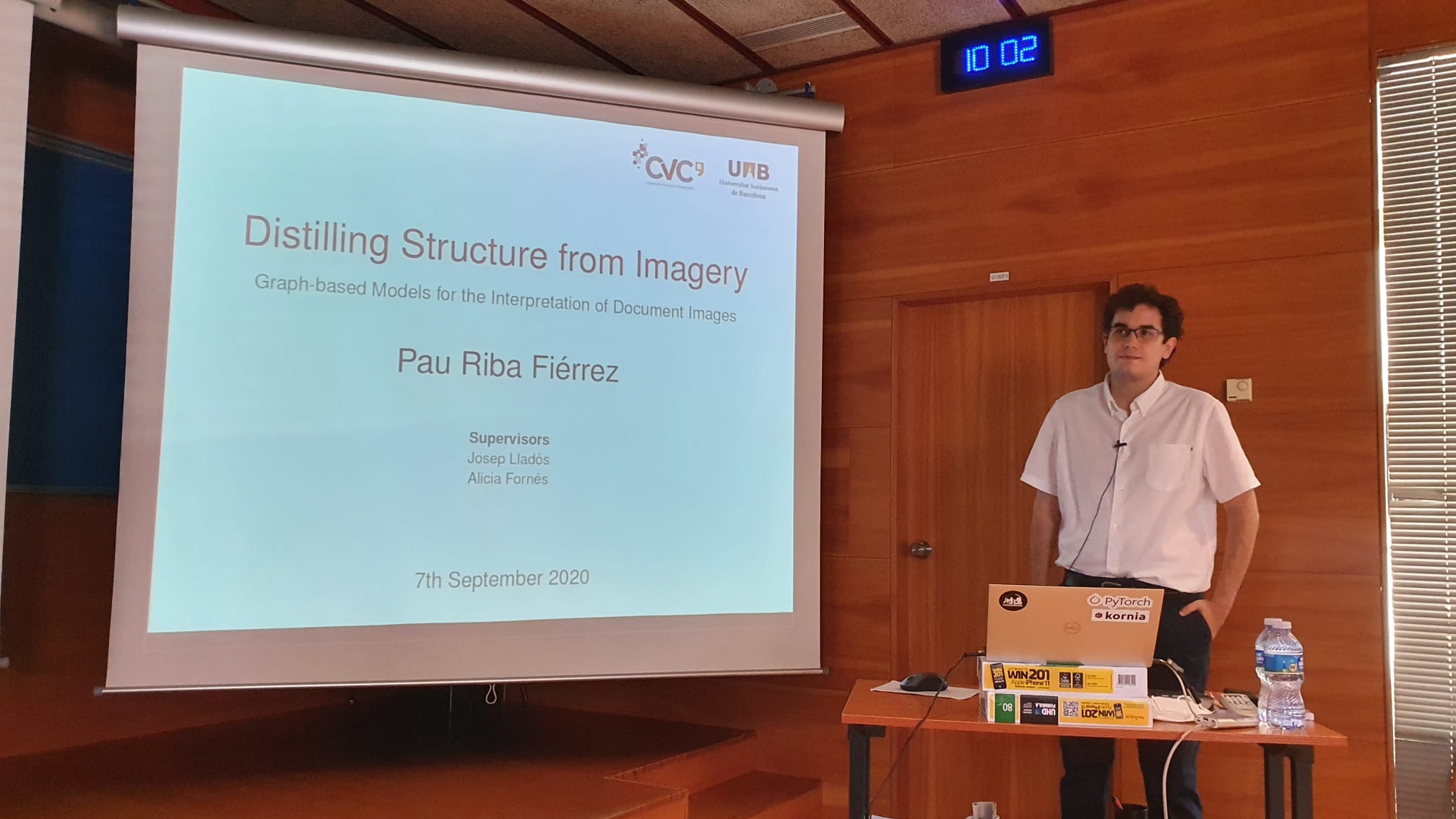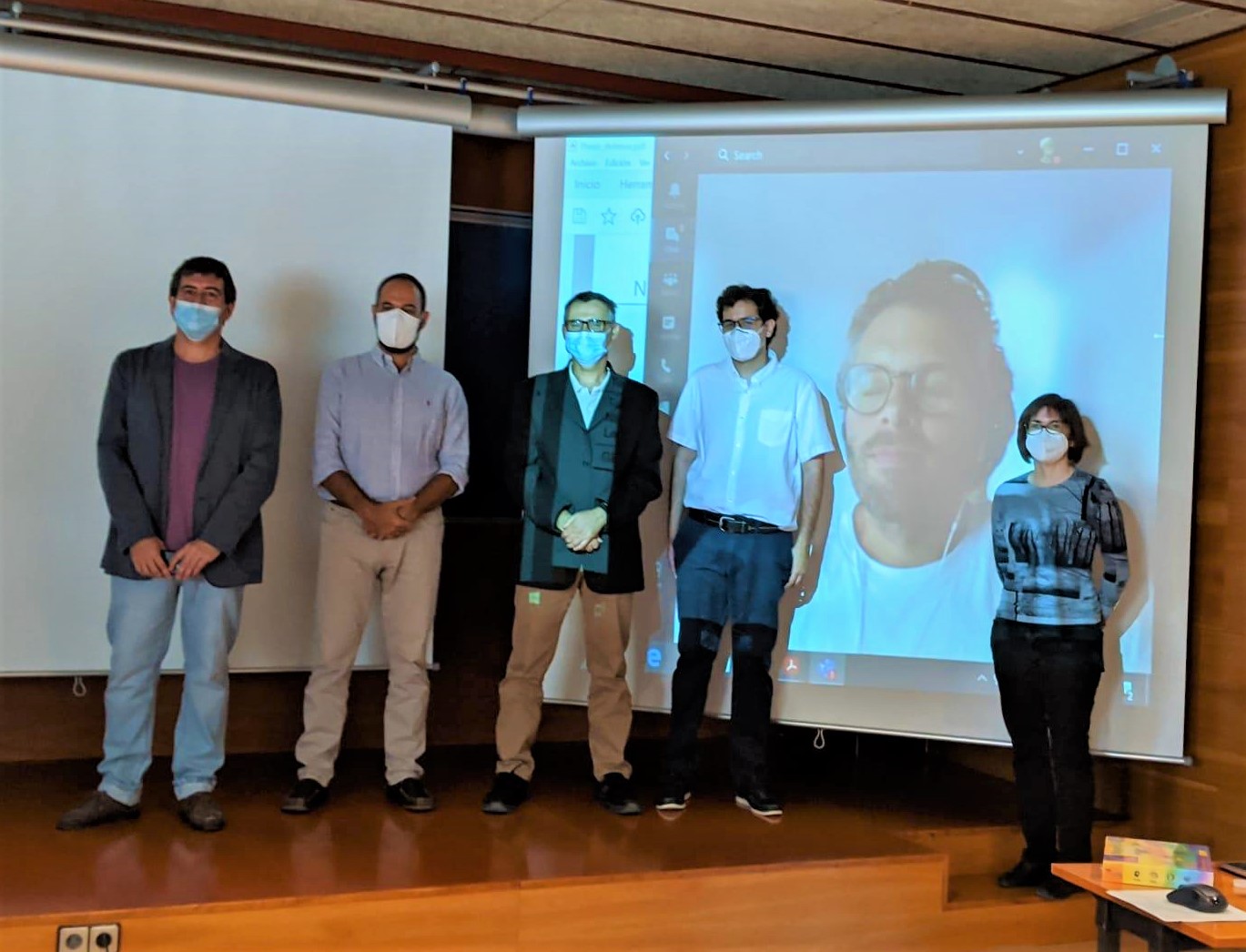
CVC has a new PhD on its record!
Pau Riba successfully defended his dissertation on Computer Science on September 07, 2020, and he is now Doctor of Philosophy by the Universitat Autònoma de Barcelona.
What is the thesis about?
From its early stages, the community of Pattern Recognition and Computer Vision has considered the importance of leveraging the structural information when understanding images. Usually, graphs have been proposed as a suitable model to represent this kind of information due to their flexibility and representational power able to codify both, the components, objects, or entities and their pairwise relationship. Even though graphs have been successfully applied to a huge variety of tasks, as a result of their symbolic and relational nature, graphs have always suffered from some limitations compared to statistical approaches. Indeed, some trivial mathematical operations do not have an equivalence in the graph domain. For instance, in the core of many pattern recognition applications, there is a need to compare two objects. This operation, which is trivial when considering feature vectors defined in ℝn is not properly defined for graphs.
In this thesis, we have investigated the importance of structural information from two perspectives, the traditional graph-based methods and the new advances in Geometric Deep Learning. On the one hand, we explore the problem of defining a graph representation and how to deal with it on a large scale and noisy scenario. On the other hand, Graph Neural Networks are proposed to first redefine a Graph Edit Distance methodologies as a metric learning problem, and second, to apply them in a real use case scenario for the detection of repetitive patterns which define tables in invoice documents. As experimental framework, we have validated the different methodological contributions in the domain of Document Image Analysis and Recognition.
Keywords: computer vision, pattern recognition, graph-based representations, graph indexing, hierarchical graphs, graph embeddings, graph neural networks, graph edit distance, table detection.















